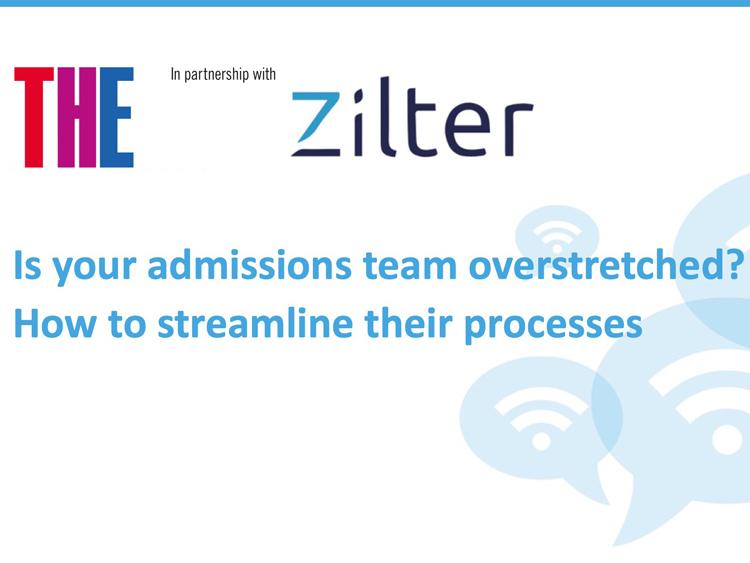
Using automation to reduce the admissions burden for students and staff

Getting the admissions process right is an essential part of university recruitment. But as the number of university applications continues to grow, admissions teams find themselves grappling with increasing pressure and reduced turnaround time.
During a session at the Times Higher Education HashtagHigherEd UK event, held in partnership with Zilter, Abhishek Nakhate, founder and CEO of Zilter, and Méabh McNairney, sales manager at PAC Apply, discussed ways of reducing the admissions burden.
“Silence creates anxiety,” Nakhate explained. “When students apply to a university and then have to wait eight weeks for a response, they are left in a state of limbo. By streamlining your admissions process, not only can you reduce this anxiety; you can also reduce staff burnout across your admissions team.”
A recent QS survey found that about 76 per cent of students expect an application response within four weeks, and about 28 per cent within a week. If conversion is not a priority for universities, they risk missing out on the most talented candidates. They also risk creating unnecessary stress for their staff.
“International applications to UK institutions are booming,” Nakhate said. “But for staff, this leads to an increased workload. During recent university strikes, one of the core demands was to prevent this workload from driving employees to breaking point. The central admissions team has to look at quality and quantity at the same time. How is this possible given rising application numbers?”
After a survey of 60 universities based in various markets, it became clear that approximately 70 per cent of admissions staff time is taken up by two processes: checking eligibility and organising interviews. About 80 per cent of those interviews have to be rescheduled and about 68 per cent of this time is hampered by technical errors. Altogether, this adds up to huge inefficiencies.
“The solution to these inefficiencies is automation,” Nakhate said. “That’s why we created Zilter Interviews and Zilter Eligibility Checker. These tools will delight staff and deliver a great experience to students.”
“Something that is rarely spoken about is greening the admission process,” McNairney added. “The paper chain that the admissions process can create adds up to a sizeable environmental footprint. Digitalising this process and storing it in the cloud can greatly reduce this footprint.”
The PAC platform is fully automated but there are manual checks for aspects of the workflow that cannot be automated. Communication with the student can also take place in the PAC portal, removing extraneous work.
“PAC is designed with assessors in mind, but also for students,” McNairney said. “Students can check the progress of their application at any time, using any device, and we also have a full applicant support team. Not only will this boost conversion rates and reduce the administrative burden, but it should also reduce the anxiety that commonly accompanies the admission process for students.”
Find out more about Zilter.

